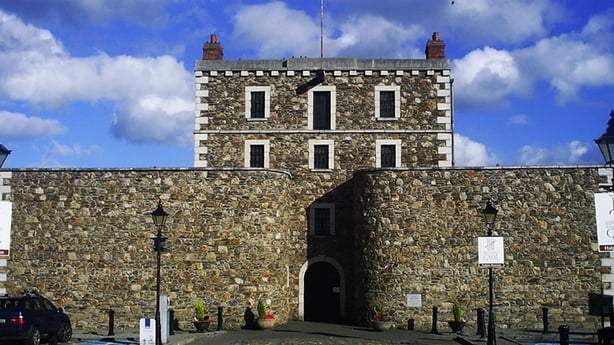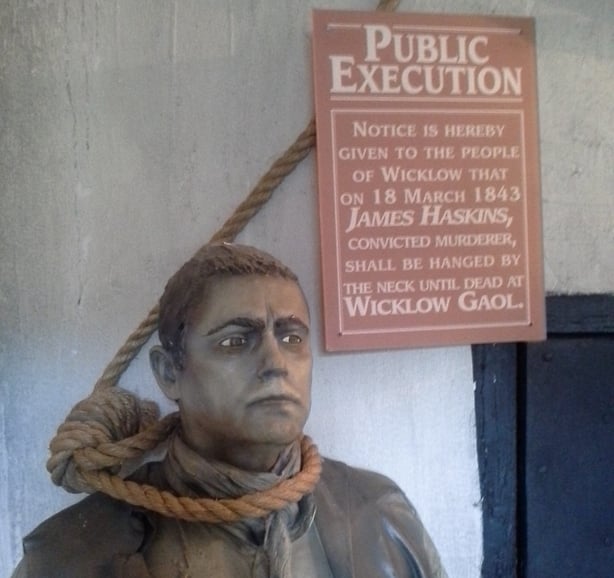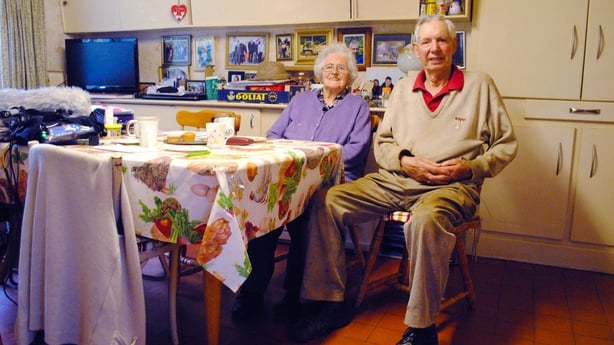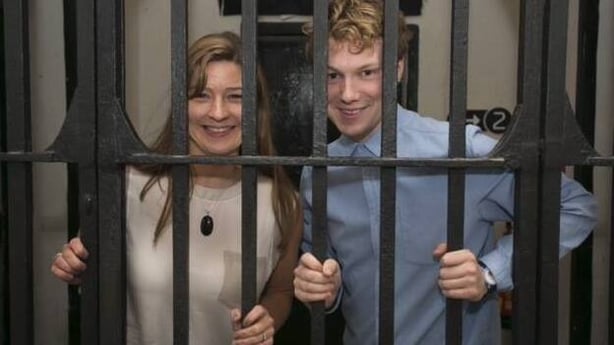Documentary On One: Dylan Haskins tries to finish what his late father began by answering the question: Is he related to the last man hanged in Wicklow Gaol? Listen to The Murderer, Me and My Family Tree here, and Dylan introduces the documentary below...
In the summer of 1998 I had just turned 11, and was sitting in the passenger seat of my Dad's car when something happened that would set him off on a course of investigation for several years.
An intimidating authoritarian voice boomed from the radio "James Haskins, you are sentenced to death by hanging". My Dad nearly crashed the car.
There aren’t many Haskins in Ireland. Not only that, but my Dad’s name was also James Haskins. So was my grandfather’s, and his father’s before that.
It was an ad for Wicklow’s historic gaol, which had just opened as a tourist attraction.

My great-great-grandfather had come to Dun Laoghaire from Wicklow in the nineteenth century, but our antecedents prior to that were a mystery. That year was the bicentenary of the 1798 Rebellion and my Dad wondered if James Haskins had been some kind of revolutionary hero.
He eventually paid a visit to Wicklow Gaol to corroborate this theory, but what he discovered sent him back to the drawing board.
James Haskins had been chosen for the radio ad because he was the last man to be hanged at Wicklow Gaol, on the 18th March 1843. He was not a hero. The crime that cost him his life was the murder of a farmer and small time moneylender named John Pugh from Rosnastraw, near Tinahely.

Dad persevered with his refocused quest to find out if we could be related to the last man hanged in Wicklow Gaol, buoyed by the strange kind of cachet that comes with having a historic murderer in the family.
When I made this documentary in 2015, the National Library of Ireland had just launched a web repository of Catholic parish records from the 1740s to the 1880s. The new website received huge interest from Irish people and Irish diaspora, with 185,000 unique visitors from 150 countries in its first week alone.
Records have also been made available online through free resources like www.irishgenealogy.ie and the Mormon-run familysearch.org, along with subscription sites like rootsireland.ie which claims to have over 22 million Irish records.
But back in 1998, before digitised records, researching your family history was a much more laborious and time-consuming pursuit. Dad combed through church archives - baptisms, marriages and deaths – and over several years gradually began to form a fragmented picture of our family tree.
On weekends we would drive to obscure church graveyards in Co. Wicklow, scraping the moss from old headstones to read the names chiseled into them long ago. We called to the homesteads of old-timers with long memories, trying to piece together the story of James Haskins, and how it might connect with our own story, but the records just didn’t exist to conclusively prove whether or not this man was our ancestor.
These are my fondest memories of that period of my childhood. When I remember my Dad, I think of those days as his co-detective, how he respected my opinions and theories as equal and took me on that journey with him.
My Dad passed away in 2006. One of the things you realise when a parent or a grandparent dies, is how much knowledge dies with them.

In 2014, it troubled me that for all Dad’s work tracing our family history, I could only remember vague scattered bits of it, but nothing about how it all joined up. I got nostalgic for that summer 17 years ago and wondered if those old people we’d spoken to about the murder were still alive. And if they weren’t, had the story died with them?
I also think there’s something in us that makes us want to go further than our parents. So I decided to try and finish what my Dad had started and solve this cold case in our family history.
I began by retracing the places I had visited in my childhood, discovering long lost relatives who welcomed me into their homes and farmers who remembered meeting my Dad all those years ago.
There were many dead-ends along the way too – but each little breakthrough spurred me on; like finding Willie Stedman, a then 89-year-old farmer from Tinahely.

A tall, proud man, Willie still drove machinery at harvest time and had a voracious appetite for stories and local history. When Willie was "only a chap", as he put it, in the 1930s and 40s he conversed with the old men and heard their stories, which he could still recall with remarkable clarity.
Willie unravelled the story of the 1843 Pugh murder for me, complete with the names of locals who had witnessed it: "There was another house quite near Pugh’s house, Dan Loughlin and his wife. They were very old people. She heard some noise in the night and she says to the husband 'Something’s going on at Pugh’s, someone could be getting murdered’. ‘Go out, so’, says he, ‘And they might murder you too!’ And they never looked out, but sure enough it was the case."
My own journey took me from the cells of Wicklow Gaol, back and forth across the county, on what had the potential to be a proper wild goose chase. At times I felt like a tourist in my own country, knocking on strangers’ doors and asking if they’d ever heard of Haskins.

Some of the strangers actually shared my surname and invited me into their homes for tea. One of those strangers was a wonderfully warm and slightly mischievous woman called Ann Pratt (née Haskins) who had done lots of her own research and had heard the story of James Haskins, the hanged man, from her father.
The quest finally took me to the House of Lords in London where I met Ann's brother and self-described "milkman from County Wicklow", Lord Christopher Haskins. Chris agreed to have his DNA analysed and to have the results compared with mine.
The loss of knowledge to passing generations motivated me to make this documentary at the outset. In 2015, it felt like both a long shot and a last chance to see if I could find anyone who might remember something of the story.

Without meeting Willie Stedman and Ann Pratt, there would have been no documentary to make and the story would have remained an unsolved mystery to me. Before the documentary broadcast on RTÉ Radio 1 for the first time, I organised a listening party in Wicklow Gaol and invited everyone I’d met.
Both Ann and Willie were there, along with what must have been the largest gathering of Haskins in one room ever. Less than a year later, Ann passed away, and a year after that, in 2017, Willie Stedman also died. While both are a huge loss to their communities, I'm so glad we managed to capture some of their stories and personalities on tape.

While I had been in a race against time to gather knowledge that might be lost, I hadn’t considered that a different kind of knowledge can also be gained with time and technological advances. That information helped finally answer the question of whether I am indeed related to the last man hanged in Wicklow Gaol and it was provided through scientific technology unavailable even ten years earlier.
On hearing the results, instinctively the first person I wanted to call and share the news with was my Dad.
Documentary on One: The Murderer, Me and My Family Tree broadcasts on RTÉ Radio 1 and is available online via the Documentary On One webpage.

